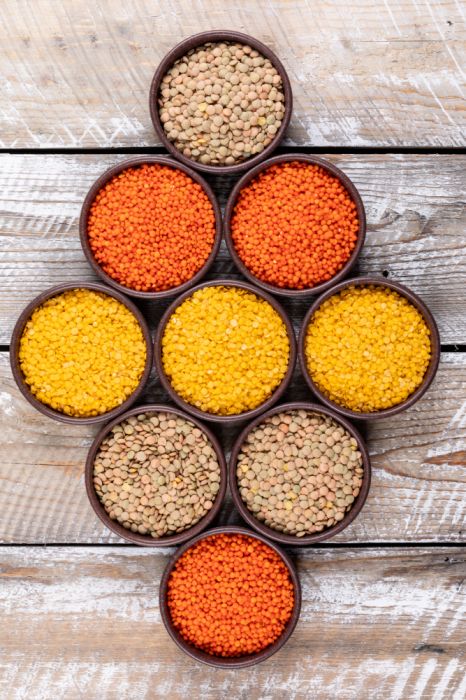
In Indian cuisine, few ingredients are as foundational and versatile as dal, beans, and pulses. These humble powerhouses are central to daily meals across the country—packed with plant-based protein, fiber, and flavor. Whether you’re making a quick weekday dal or a slow-cooked comfort dish, these ingredients are always the heart of the kitchen. Let’s explore the different types of Indian lentils and pulses and the regional recipes they inspire.
The Core of Indian Cuisine: Dal, Beans, and Pulses
From the creamy richness of Punjabi dal makhani to the tangy sharpness of South Indian sambar, dal and pulses are more than ingredients—they are cultural symbols. Every region of India has its own way of preparing and seasoning them, influenced by local spices, traditions, and climate.
Types of Indian Lentils, Beans, and Pulses
Toor Dal (Split Pigeon Pea)
Toor dal is one of the most widely used lentils in Indian households. It’s known for its creamy texture and mild flavor. Often used in sambar, dal fry, and Gujarati dal, it’s a pantry essential for every Indian kitchen.
Moong Dal (Yellow or Green Gram)
Moong dal is light, easy to digest, and incredibly versatile. It’s a go-to for dishes like khichdi, moong dal halwa, and even dosas. Green moong (whole) is often sprouted for salads, while yellow moong (split and husked) is used in soups and dals.
Urad Dal (Black Gram)
Used extensively in South Indian cooking, urad dal is the key to fluffy idlis, crisp dosas, and spicy vadas. In North India, it forms the base of rich preparations like dal makhani and maa ki dal.
Chickpeas (Chole) and Kidney Beans (Rajma)
These legumes are more than just occasional treats—they’re mainstays in hearty North Indian dishes. Rajma curry served with steamed rice is a beloved comfort meal, while chole (chickpeas) can be found in street foods, snacks, and festive spreads.
Lobia and Moth Beans
Lobia (black-eyed peas) and moth beans may not be as mainstream, but they are protein-rich and full of earthy flavor. These are popular in Maharashtrian and Rajasthani cuisines, used in usal, sabzis, and even fritters.
Want to stock your pantry with these essential ingredients? Check out this curated grocery collection of Indian lentils and pulses for home delivery.
Classic Indian Dishes Using Dal, Beans, and Pulses
North Indian Comforts
Dishes like rajma chawal, dal makhani, and chole bhature are iconic North Indian meals. They’re slow-cooked with spices like cumin, garam masala, and bay leaves to develop deep flavor and rich textures.
South Indian Staples
In the South, toor dal is used in sambar—a spicy stew served with rice or dosa. Urad dal stars in idli and dosa batters, while rasam—a peppery tamarind broth—is made with a light dal base and enjoyed daily.
Gujarati and Rajasthani Specialties
Gujarati dal has a unique balance of sweet and sour, while Rajasthani cuisine highlights panchmel dal, a combination of five lentils cooked with ghee and whole spices. These dishes are typically served with rice or breads like bati and thepla.
Healthy and Modern Recipes
Today, pulses are also being used in fusion and health-forward dishes—think moong dal soup, chana salads, sprouted moong wraps, or even rajma veggie burgers. These options are great for those looking to add more protein and fiber to their diet without relying on meat.
Conclusion: Nourishment Rooted in Tradition
Dal, beans, and pulses are more than just food in India—they are part of the country’s identity. Their affordability, nutritional value, and adaptability make them a staple in both traditional and modern kitchens. Whether you’re looking to cook a comforting dal tadka or experiment with lentil-based salads, there’s something for every palate.
Ready to cook? Browse and buy high-quality dals and pulses online from this trusted grocery store and start your culinary journey with the best ingredients at your fingertips.







